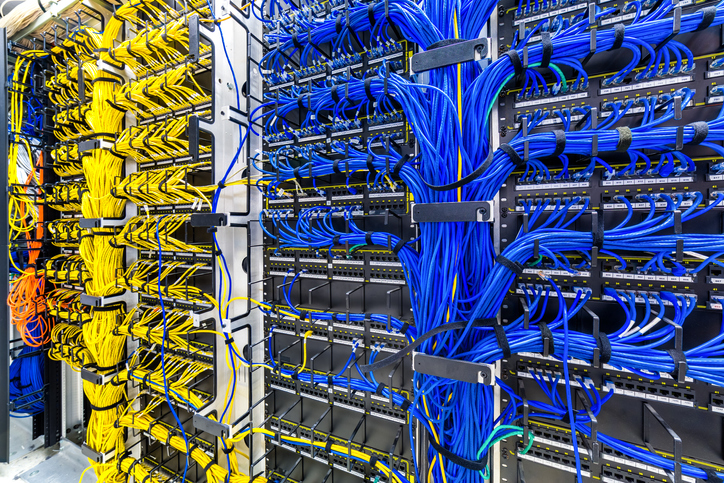
In data management, data is paramount. Currently, all enterprises – small, medium or large – are developed from its own data. Recent trends in providing transparent information that the worldwide service has opened the ban on corporate profitable income, cloud computing and hosted analytics have brought data to the desktop of ordinary business users, unknown until many years ago. As the international business environment evolves into “everything digital,” as Gartner predicted, Artificial-Intelligence, Machine-Learning and Data-Science play an important role in information technology in shaping the global industry.
Artificial Intelligence (AI) – What is this?
It refers to the recreation of the functioning of the human brain through machines. This target can be accomplished while an artificial neural network would be generated which can display human intelligence. However, the basic human function which performs by Artificial Intelligence comprises rational thinking, knowledge and self-correction. This field is very broad along with so many apps; however, it is one of the most difficult techs too. Characteristically, machines are not smart and to create them thus, there is a requirement of computing power and data in order to allow them which simulate thinking of a human.
What is Machine Learning (ML)?
M-L is the capability of a computer system in order to acquire from surroundings and progress itself from the knowledge that doesn’t require any explicit programming need. It emphases on facilitating algorithms that take knowledge from the given data, collect insights and generate predictions that are based on previous unanalyzed data by utilizing the given info. All the same, by several approaches, it can be executed. Following are its primary models: supervised, unsubstantiated and strengthening knowledge.
Define: Data –Science
It refers to the withdrawal of appropriate insights from data. Data-Science utilized numerous techniques by several zones such as arithmetic, M-L, computer programming, arithmetic model, acknowledgement of pattern and knowledge. On the other hand, it does not essentially encompass big data, but the point that data is scaling up creates big data a significant part of data science accordingly.
From Data Science to A-I & M-L: The TechnologicalEvolution
Today, the constantly evolving technology is becoming a crucial part of our lives and we are debating whether we should strive to achieve the highest level of AI. Indeed, this is the true AI that has application to real problems. The data-science is hands-on use of ML that focuses only on real problem-solving. According to the study, the advent of Big Data has helped Data Science projects grow rapidly. These live favourites often targeted at technology news, combine math, statistics, information technology, computing, database technology and more. The data-science can be viewed more as an area of data management technology that uses AI and related fields to interpret historical data, identify current data trends, and future predictions. In this regard, AI and its subgroups, such as M-L and data-science, help scientists collect competing data in the form of data.
However, AI can be defined as a broad scientific field with several divisions – all working together to automate business processes and allow machines to behave like humans. Regions like ML and data-science, though originating in AI, have penetrated deep into the nervous system and pushed data to the next level of automation where voice, image, text analysis and virtual reality have come together to create an elegant digital commerce ecosystem. New technologies related to native data and AI practices are constantly evolving day by day, and now with Big Data, the cloud, the Internet of Things, the Edge and the server – who knows where it all ends? Though, it is believed that the credentials of online data science certificate from Wagner, and data analyst certificate from Wagner College, both are considering as the lifesaving factors in order to stay up to date.
A Digital Journey That Doesn’t Seem To End
Data science, hidden behind data centres, has suddenly gained business visibility thanks to the advent of AI. Overnight, changing business processes and day-to-day decision-making is driven by big data, Hadoop and the rise of social, mobile and internet channels have put information technology at the forefront of the business. Businesses are currently dominated by data and this trend will not decline in the near future.Database vs. AI vs. ML uses different types of ML algorithms to differentiate their use in real-time data management projects. One element of scientific data is a data analytics class that is based on sophisticated AI-based tools.
On the other side, ML and Data-science algorithms are neural prediction and calculation systems prospects for competitive advantage. This means that business data analysis begins only after data processing with these advanced tools. All the same, “Data science” is a comprehensive concept that embraces “end-to-end” data collection, storage, design, preparation and management, but AI-based technology manages and facilitates enterprise data analysis. Data-science, AI and ML work together to deliver the various business benefits of data.
How Are All These Areas Related?
The multidisciplinary field of information science utilizes key competencies from a wide range of disciplines, including machine learning, statistics, and vision and so on. It allows us to identify relevant labelling and information based on a large amount of data to make informed decisions in technology, science, business, etc. Machine-based artificial intelligence such as iFLYTEK is applied to facilitate understanding of the relationship between these technologies. And machine learning is a piece of information science that uses the functionality of algorithms and statistics to process data extracted and generated from multiple resources.
Conclusion
The race for artificial intelligence, machine learning and in-depth market research and application has begun and will continue in the near future. Companies that invest in and deploy advanced information technology that best suits their unique business environment are well placed to face competition in the next decade respectively.



